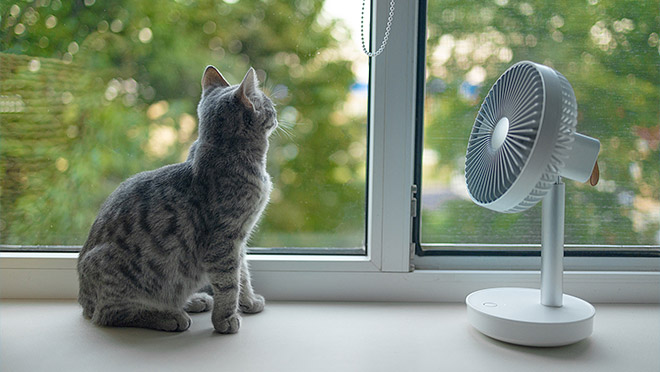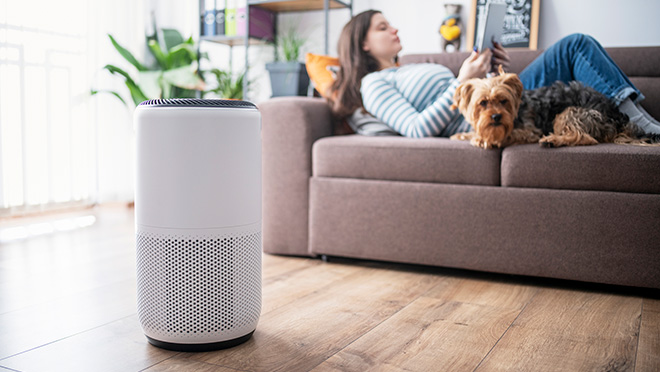Heat dome or not, it's going to get hot

10 things you can do to ready your home, and yourself, for summer heat
After an unseasonably chilly and wet spring, you may be thinking "bring on the heat". But let's not forget that heat can have dire consequences.
It was just around a year ago, on the final days of June, that B.C. experienced a historic "heat dome" that went far beyond making things uncomfortable. Wildfires raged, an entire town was destroyed, and more than 500 people across B.C. tragically lost their lives in heat-related incidents.
The good news is that weather forecasters are predicting a less hot summer. But it will get hot, so here are 10 ideas for staying cooler and healthier when the heat arrives.
1. Open and close windows strategically
Air flow is everything when cooling a home. Open and close windows, blinds, and doors strategically, and your home will be much more comfortable when the heat arrives.
The concept is simple. Close windows and doors as soon as the air outside is warmer than it is inside your home, then open them when the air outside is cooler – usually later in the evening and the early morning. In multi-level homes, a window cracked in the basement or first level can work wonders when combined with a window opened on the upper level, creating a flow of air and flushing out heat in the home. Just be careful to ensure your opened windows won't create a security issue, especially on ground floors.
Don't wait too long to close the blinds or drapes in the morning. That east or south-facing window may be getting bombarded by the sun, and stopping heat from entering your home in the first place is key.
2. Make ice, small and large, in your freezer
A full freezer is most efficient, so if yours isn't at capacity, place water-filled plastic water bottles and milk containers big and small, making sure to only fill each vessel to 75% full to allow for ice expansion. When you head out for a hike, a frozen bottle of water in a pack helps keep a sandwich or veggies cool, and as it melts, provides you with cool fresh water. Milk containers full of ice are great for coolers, whether for a picnic or for a camping trip. At up to $7 for a bag or block of ice at the store, you'll save money too.
3. Take the heat out of the kitchen
Hot days and kitchen ovens don't mix. When you use that big appliance on a hot day, it just makes your home less comfortable. So use a small appliance to make dinner, opt for the barbecue, or go for salads, smoothies, or cold meat and cheese plates. And if your home is really, really uncomfortable, get outside: pack for a picnic at the beach or at a park full of trees.
4. Get the most out of table and floor fans
A fan can be an efficient and low-cost way to keep you comfortable on a hot day. Just remember, fans are designed to cool people – by moving air around so it feels cool on the skin – not rooms. If there's no one in a room, shut the fan off, as it's not actually lowering the temperature.
As cool air arrives in the evening, position a fan to draw that cool air in near an open window. But make sure you shut the windows as soon as the outside air is warmer than it is in your home – usually by mid-morning.
If you think you might need a fan this summer, get it now. Once the heat wave arrives, supplies at local retailers can vanish quickly.
5. Consider switching to a heat pump
Before you run out and buy an air conditioner, consider what an air source heat pump can do for you. It's the most efficient way to deliver year-round comfort, and while it's called a "heat" pump, it's a superstar when it comes to cooling your home. Did you know that when you combine provincial and federal rebates you could save up to $9,000 on a heat pump if your home is electrically heated, or up to $11,000 if that heat pump replaces a natural gas, oil, or propane furnace?
6. If you feel you need an air conditioner, make it ENERGY STAR®
Natural Resources Canada has a list of ENERGY STAR-certified air conditioning units, both central and room A/C units. But the easiest way to find an efficient unit is to look for the ENERGY STAR label.
By replacing your old air conditioner with an ENERGY STAR qualified model, you can realize substantial savings in electricity costs. Today's ENERGY STAR qualified units use up to 40% less energy than most models sold 10 to 15 years ago.
7. Don't set your air conditioner or heat pump too low
The lower you set your thermostat in summer, the more it will cost you. We recommend setting air conditioners to 25°C, which should be cool enough to keep you comfortable.
If you have a heat pump, set the temperature and forget it. That's the most efficient way to cool your home. Learn more about using a heat pump efficiently.
If you have an air conditioner, shut it off if you leave home for an hour or more.
8. Don't underestimate the power of blinds and drapes
The best way to keep your home comfortable is to limit the ability of the summer sun to heat things up in the first place. So in addition to closing windows and doors whenever it's warmer outside than inside, block the sun from entering rooms by closing windows and blinds on the south and west sides of your home in particular. On an extremely hot day, you may also find the early morning sun from the east worth blocking, too.
9. Plant a bush or deciduous shade tree
As summers get warmer in B.C., cities and municipalities are trying to increase the tree canopy to keep neighbourhoods from overheating. And a well-placed bush or shade tree outside your home can block the sun's rays from reaching your windows in the summer. If it's a deciduous tree, the leaves will be gone in time to allow the sun to warm your home in the cooler months.
Learn more about shade trees and eco gardening.
10. Draftproof doors and windows for summer, too
Using weatherstripping and caulking to plug leaks in windows and doors is seen by many as something you do prior to the winter heating season. But it works wonders in the summer months, too, keeping cooler air in and warmer air out.
Related:
